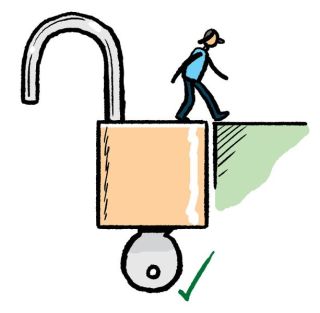Human Trafficking in Ireland

Earlier this week, on Wednesday 13th September 2023, the Irish Human Rights and Equality Commission (IHREC) as Ireland’s National Rapporteur on Human Trafficking published their second National Anti-Trafficking Report.
The Report notes that data on victims of Human Trafficking between 2013 and 2022 from the National Referral Mechanism for identification of victims of trafficking shows that trafficking for sexual exploitation is the most common form of exploitation at 55 per cent followed by trafficking for labour exploitation at 38 per cent and trafficking for criminal activities at 6 per cent.
Also in 2022, trafficking for the purpose of "criminal activities ceased its declining trend and re-emerged with two new cases, both cases pertaining to exploitation in grow houses. In 2022, for the first time a suspected trafficking for organ removal was recorded, which mirrors the trends in the European Union where novel forms of exploitation are picking up. Human trafficking in Ireland is highly gendered, which is a lasting trend in Ireland as well as in the EU". More women fall victim to human trafficking than men (67 per cent versus 33 per cent).
Traffickers often use the threat of a criminal prosecution in order to maintain control meaning victims can be afraid to come forward. A key Commission recommendation is that a "statutory protection from prosecution for victims of human trafficking be included in the new Bill where a person has committed a crime as a direct consequence of them being trafficked".
Other Commission recommendations include:
On safe and appropriate accommodation:
- That the Department of Children, Education, Disability, Integration and Youth should treat the accommodation of victims of trafficking as an issue of utmost priority within the process to end Direct Provision, to ensure that victims of trafficking no longer reside under such arrangements.
- That the State strongly considers relieving the IPAS of the duty to provide accommodation services to all victims of trafficking (who are less than 1% of residents), and until then should review its capacity and devise a better strategy for appropriately accommodating victims of trafficking.
On technology:
- That a National Strategy/Forum on Technology and Human Trafficking is developed.
- That the State develops extensive public awareness and educational programmes targeting young people, in particular to prevent the risk of grooming of girls on social platforms and to discourage young men from becoming potential buyers.
- That pornography and escort websites as well as other legal entities in the online space, should be monitored and regulated in a way that eliminates risk of trafficking and human rights abuses.
On labour exploitation:
- That the State opts into the EU Employer Sanctions Directive and that any proposals for a seasonal work permit align with the EU standards or that the introduction of such permit is discontinued altogether.
- That a standalone offence is introduced in Irish law for holding a person in slavery, servitude or forced or compulsory labour.
On children:
- That the State works with An Garda Síochána and Tusla to develop a methodology for collecting uniform and reliable data on the scale and different forms of exploitation of children, in line with the recent recommendations of the UN Special Rapporteur on the sale and sexual exploitation of children.
- That human trafficking is included in the Child First Guidelines to ensure that those responsible for the care of children have the necessary understanding of trafficking
The third evaluation report on Ireland’s performance on implementing the Council of Europe Convention on Action against Trafficking in Human Beings, notes that the legislation governing human trafficking in Ireland has remained largely unchanged since GRETA’s second evaluation in 2017 and that Ireland continues to be primarily a country of destination of victims of trafficking in human beings. The Report finds that “The number of presumed victims of trafficking identified by An Garda Síochána was 103 in 2017, 64 in 2018, 42 in 2019, 38 in 2020, and 44 in 2021. While trafficking for the purpose of sexual exploitation remains the prevalent form of exploitation, the number of persons trafficked for the purpose of labour exploitation has increased. In the period 2016-2020, 46% of the presumed victims came from Africa (primarily from Nigeria), 36% from the European Economic Area, and 11% from Asia”.
Government must fully Implement the recommendations of the 2022 Trafficking in Persons Report
The Programme for Government makes a commitment to enact legislation that encompasses both UN and EU measures and protocols to combat the smuggling and trafficking of migrants. The Department of Justice and Equality committed in June of 2020 to study the recommendations contained in the Trafficking in Persons Report 2020 (US Department of State, 2022) and state that ending the crime of human trafficking is a priority for the country.1 The Human Trafficking investigation and Coordination Unit has been established with an Garda Siochána.
To learn more about issues of child trafficking in Ireland, you can listen to a Social Justice Ireland podcast with MECPATHS, who are the only non-profit organisation in Ireland which focuses specifically on the issue of Child Trafficking. It works to raise awareness on this hidden issue and educates frontline and emerging professionals to prevent Child Trafficking and enhance existing protective measures.
Education Manager, Ann Mara and Network & Communications Manager, J.P. O’Sullivan chat with Susanne Rogers about the issue of child trafficking in Ireland, how we currently understand it, how the language needs to shift and what supports must be put in place. LIsten here: https://www.podbean.com/eas/pb-9b5yq-14764d6
1https://www.oecd.org/wise/measuring-well-being-and-progress.htm